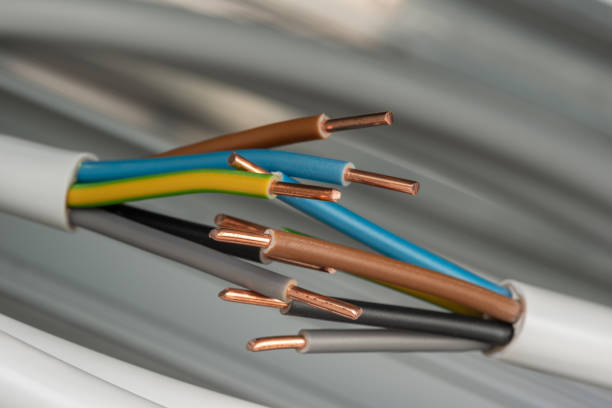Author: Site Editor Publish Time: 2025-03-10 Origin: Site
In modern life, from office computers to home theater systems to industrial equipment, power cords always play a vital role. The seemingly simple power cord actually contains complex designs and strict standards. Today, we will take you into the world of power cords, understand various different power cord types and their application scenarios, and help you make more informed decisions when purchasing.
As an important link between electrical appliances and power sources, power cords must not only ensure the stable transmission of current, but also consider safety, durability and environmental protection. A high-quality power cord should have the following characteristics:
1. Efficient transmission of electrical energy: ensure that electrical appliances obtain stable current and avoid affecting equipment performance due to voltage fluctuations.
2. Good insulation performance: effectively prevent leakage and short circuit, and ensure safe use.
3. Wear resistance and anti-aging: adapt to the use requirements in different environments and extend product life.
Different countries and regions have their own standards for power plugs and cables. Here we briefly introduce several common types:

IEC power cords are mainly used for computers, monitors and other electronic devices. The most common one is the IEC C13/C14 interface. This type of power cord adopts international common standards, and the design focuses on protection and compatibility, which can meet the needs of most office and home equipment.
US power cords generally adopt NEMA 1-15 or NEMA 5-15 standards and are common in North America. This type of power cord focuses on safety and durability, and is manufactured in strict accordance with UL certification standards in the design to ensure stability under high-load use.
European power cords are widely used in Europe, and their plugs are mostly round or flat, which meets EN standards. In addition to strict requirements in terms of safety, European power cords also emphasize environmental protection and energy saving, which is suitable for the promotion of modern green energy-saving concepts.
The power cords on the British market usually adopt the BS 1363 standard and have a three-pin design to ensure grounding safety. The power cords on the Chinese market are designed with reference to the GB standard, and their plugs and sockets are more diverse, including small appliances suitable for home use and heavy-duty products suitable for industrial equipment.
Faced with the many models and standards of power cords on the market, consumers should consider the following points when purchasing:
1.Equipment power and voltage: Make sure that the selected power cord can carry the maximum power and working voltage of the equipment to avoid overheating or safety hazards caused by insufficient wire.
2. Certification and standards: Give priority to products that have passed national or international certifications, such as UL, CE or CCC certification, to ensure product quality and safety.
3. Use environment: For power cords used in outdoor or industrial environments, it is recommended to choose models with higher waterproof, dustproof and wear-resistant performance.
4. Connector type and compatibility: Understand the plug type required by the device to ensure that the interface of the power cord can match the device to avoid affecting the use due to interface incompatibility.

Proper use and regular maintenance of power cords can not only extend the life of the equipment, but also effectively prevent safety accidents:
1. Avoid excessive bending and pulling: Frequent physical squeezing and bending will damage the internal wires. It is recommended to maintain an appropriate arc when using.
2. Check the insulation layer regularly: If the outer skin of the power cord is found to be damaged or aged, it should be replaced in time to prevent leakage or short circuit.
3. Proper storage and storage: When not in use, the power cord should be rolled up and placed in a dry place to avoid long-term exposure to sunlight or humid environments.
Although power cords may seem inconspicuous, they play a vital role in the entire electrical system. Whether it is daily use or application in special scenarios, understanding the types of power cords and the key points of purchase are important prerequisites for ensuring the safe and stable operation of the equipment. I hope this article can provide you with practical references when purchasing and using power cords, so that each power cord can become a solid backing for your safe use of electricity.
If you would like to know about the various power cords produced and sold by manufacturers, please contact Aline.
Originated Cable & Wire business in 1998, We has been dedicating itself to the manufacturing and exporting of high-quality Cable Assemblies, Wire Harnesses for lighting & Home Appliances, Worldwide Power Cord, Indoor & Outdoor Extension Cord, Electrical Wires, Plug Inserts or custom-made products.
